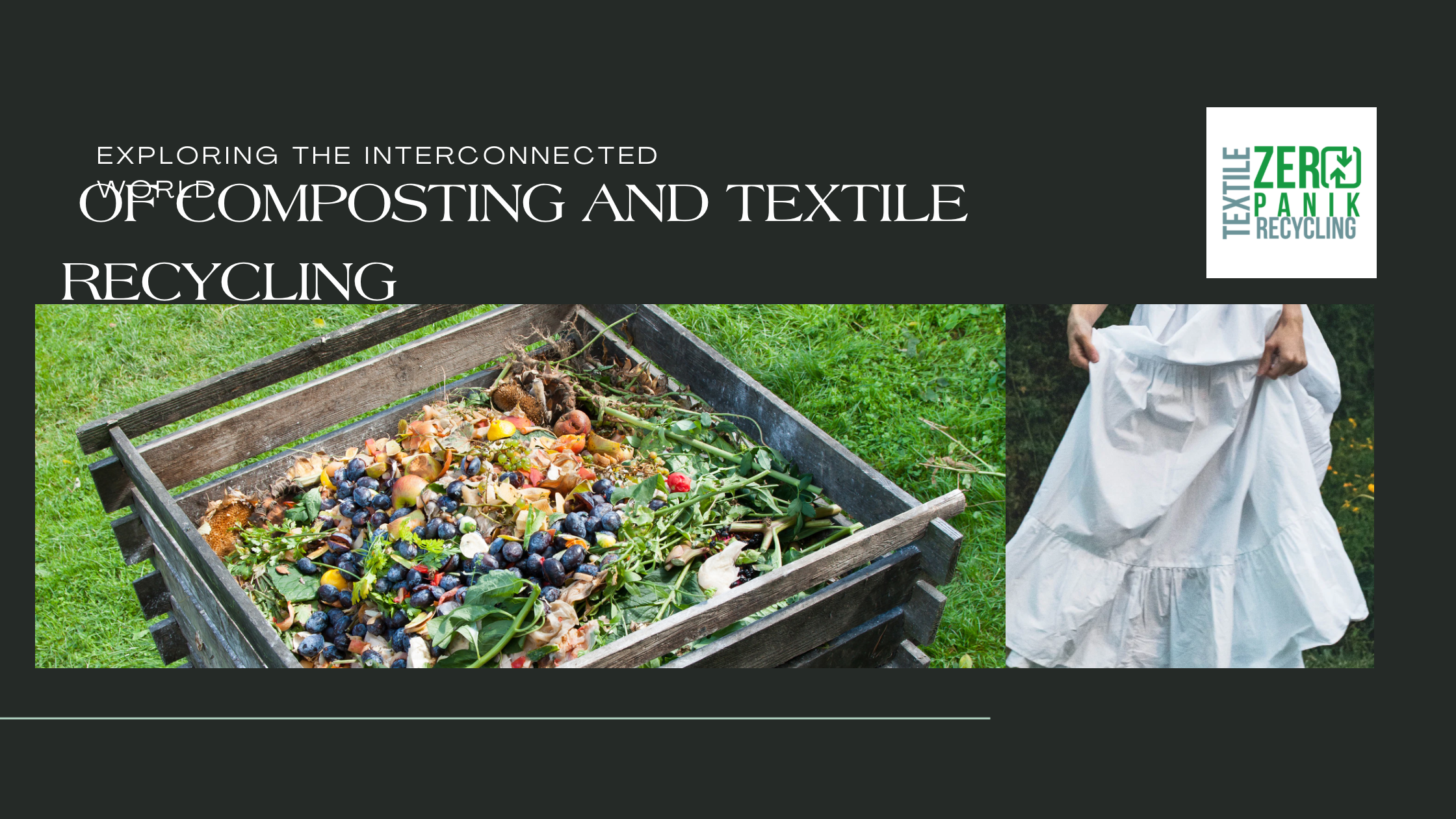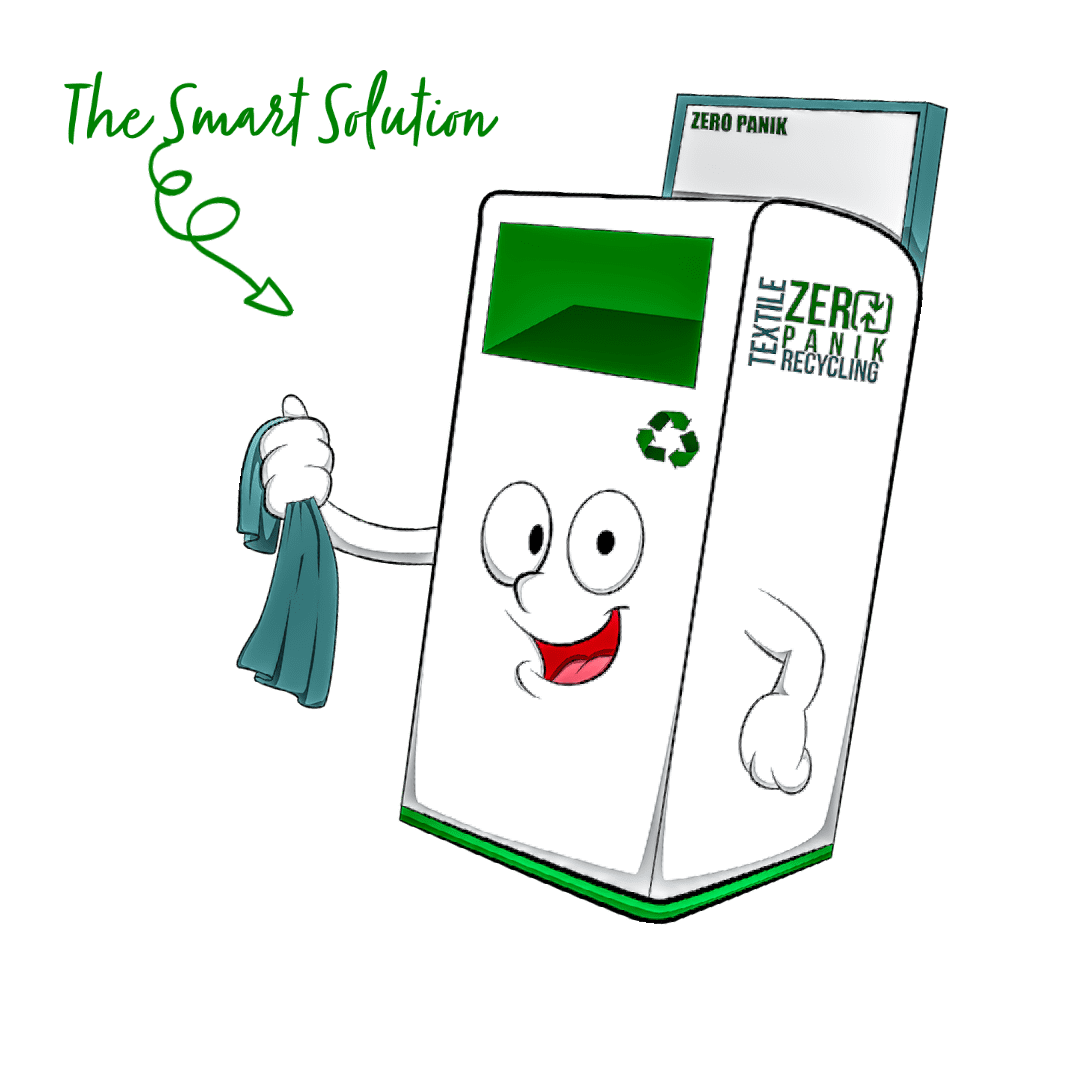
Introduction to composting and textile recycling
Composting and textile recycling may seem like unrelated topics, but they have a significant connection. Composting is the process of decomposing organic materials, such as food waste and yard trimmings, to produce nutrient-rich compost that can be used to fertilize plants. Textile recycling, on the other hand, involves reusing or repurposing old or unwanted textiles to reduce waste. So, how do these two concepts intersect? This article will explore the relationship between composting and textile recycling, and how they can work together to create a more sustainable future.
Understanding the environmental impact of textile waste
Textile waste is a growing concern that affects both the environment and our overall sustainable future. The fashion industry is known for its fast-paced production and consumption, leading to an alarming amount of textile waste. It is estimated that around 92 million tons of textile waste is produced globally each year. Only a small fraction of this waste is recycled, with the majority ending up in landfills or incinerators.
The environmental impact of textile waste is significant. The production of textiles requires large amounts of water, energy, and other resources. Additionally, many textiles are made from synthetic materials that do not break down easily and can release harmful chemicals when they degrade. This contributes to the pollution of soil, water, and air.
By composting textiles, we can divert them from the landfill and reduce their environmental impact. Natural fibers, such as cotton or wool, can be composted and turned into nutrient-rich soil amendments. This process not only reduces waste but also helps to close the loop in the textile production cycle.
The role of composting in reducing textile waste
Composting plays a crucial role in reducing textile waste. It offers a sustainable solution to divert textiles from landfills and incinerators. There are several methods of composting textile waste, each with its advantages.
One method is backyard composting, where natural fibers, such as cotton or wool, can be added to a compost pile along with other organic materials. As these textiles break down, they release valuable nutrients into the compost, ultimately transforming into nutrient-rich soil amendments.
Another method is industrial composting, which involves sending textile waste to specialized facilities equipped to handle large volumes of materials. In these facilities, textiles are broken down efficiently, creating compost on a larger scale. This compost can then be used in agricultural or landscaping applications.
Composting textile waste offers numerous benefits to our environment. It reduces the amount of waste sent to landfills, lowers greenhouse gas emissions, and conserves resources by productively utilizing textiles.
In the next section, we will explore the impact of composting textile waste on soil health and the advantages it brings to agriculture and gardening practices. Read on for more information on the benefits of textile waste composting!
Composting as a sustainable solution for textile recycling
Composting textile waste not only diverts materials from landfills but also contributes to the overall sustainability of textile recycling. By transforming textile waste into nutrient-rich soil amendments, composting plays a significant role in improving soil health and encouraging sustainable agricultural and gardening practices.
One of the key advantages of composting textile waste is its positive impact on soil health. The compost created from textile waste is rich in organic matter, which enhances soil structure, moisture retention, and nutrient availability. With improved soil health comes increased agricultural productivity, as well as better plant growth and resilience to diseases and pests.
Moreover, the use of compost made from textile waste reduces the reliance on synthetic fertilizers, which often come with environmental and health concerns. By substituting these chemicals with naturally derived compost, gardeners and farmers can minimize their carbon footprint and create a healthier, more sustainable ecosystem.
Composting textile waste also brings several benefits to agriculture and gardening practices. The nutrients released during the composting process improve soil fertility, leading to healthier, more robust plant growth. Additionally, compost helps retain moisture in the soil, reducing the need for irrigation and conserving water resources.
In the upcoming section, we will delve deeper into the specific benefits of using textile waste compost in agriculture and gardening. From increased crop yields to improved soil structure, there are countless reasons why composting textile waste is a sustainable solution for textile recycling. Want to learn more about the advantages of incorporating textile waste compost into your growing practices? Keep reading!
Compostable textiles and their benefits
Now that we understand the importance of composting textile waste, let’s explore the types of textiles that are compostable and the benefits they bring when used in composting.
Compostable textiles are made from natural fibers that easily decompose in the composting process. These fibers include cotton, linen, hemp, and jute, among others. Unlike synthetic textiles, which are derived from petroleum-based materials and take hundreds of years to break down, compostable textiles offer a more eco-friendly alternative.
When composted, these textiles contribute valuable organic matter to the compost, enriching the soil and providing numerous benefits. For example, cotton textile waste in compost helps improve soil aeration, resulting in better root growth and nutrient uptake by plants. Linen and hemp fibers add valuable carbon to the compost, balancing the carbon-to-nitrogen ratio and enhancing microbial activity.
Additionally, compostable textiles break down faster than synthetic fabrics, promoting a quicker composting cycle and ensuring a shorter turnaround time for producing nutrient-rich soil amendments. This can be particularly advantageous for commercial composting operations or individuals who are eager to see results sooner.
By choosing compostable textiles and incorporating them into the composting process, we not only divert waste from landfills but also stimulate healthy soil regeneration. In the next section, we’ll discuss some practical tips on how to incorporate compostable textiles into your compost pile and maximize their benefits.
Challenges and considerations in composting textile waste
While composting textile waste is a beneficial practice, there are some challenges and considerations to keep in mind. Understanding these factors can help ensure a successful composting process and maximize the benefits of textile recycling.
One key challenge is the presence of synthetic fibers in textiles. Many textiles, especially those used in the fashion industry, contain synthetic materials such as polyester or nylon. These synthetic fibers do not break down easily in compost and can take a significant amount of time to degrade. It is important to separate synthetic textiles from compostable textiles to avoid contamination.
Another consideration is the dye and chemical treatments used on textiles. Some dyes and treatments may contain harmful substances that can affect the quality of the compost or pose a risk to plants and ecosystems. It is essential to research and choose textiles that have been produced with environmentally friendly dyes and treatments, or to remove any potentially harmful elements before composting.
Moisture control is also critical when composting textiles. Textiles that are too dry may not break down effectively, while overly wet textiles can create a smelly and anaerobic compost pile. Maintaining the right moisture balance by properly layering textiles with other organic materials and monitoring moisture levels is essential for successful composting.
Lastly, it is important to consider the capacity of your compost pile and the overall volume of textile waste you have. Composting large quantities of textiles may require additional space and resources, so assessing your composting capacity and adjusting accordingly is necessary.
By being aware of these challenges and considerations, you can overcome potential obstacles and create a more efficient and effective composting system for textile waste.
Conclusion: The future of composting and textile recycling
In conclusion, composting plays a crucial role in textile recycling by diverting textile waste from landfills and turning it into nutrient-rich compost. However, it is essential to be mindful of the challenges and considerations associated with composting textiles.
Moving forward, the future of composting and textile recycling looks promising. As awareness grows and sustainable practices become more mainstream, we can expect to see advancements in composting methods specifically designed for textile waste. Researchers and organizations are already exploring innovative techniques, such as enzymatic processes and specialized composting facilities, to improve the decomposition and recycling of textiles.
Additionally, there is a growing demand for sustainable and eco-friendly textiles, which encourages manufacturers to adopt more environmentally friendly production methods and materials. This shift towards sustainable textiles will not only make composting easier but also reduce the environmental impact of the textile industry as a whole.
By embracing composting and textile recycling, we can contribute to a more sustainable and circular economy. Through education, collaboration, and individual action, we have the power to make a difference and create a future where textile waste is seen as a valuable resource rather than a burden on the environment.
